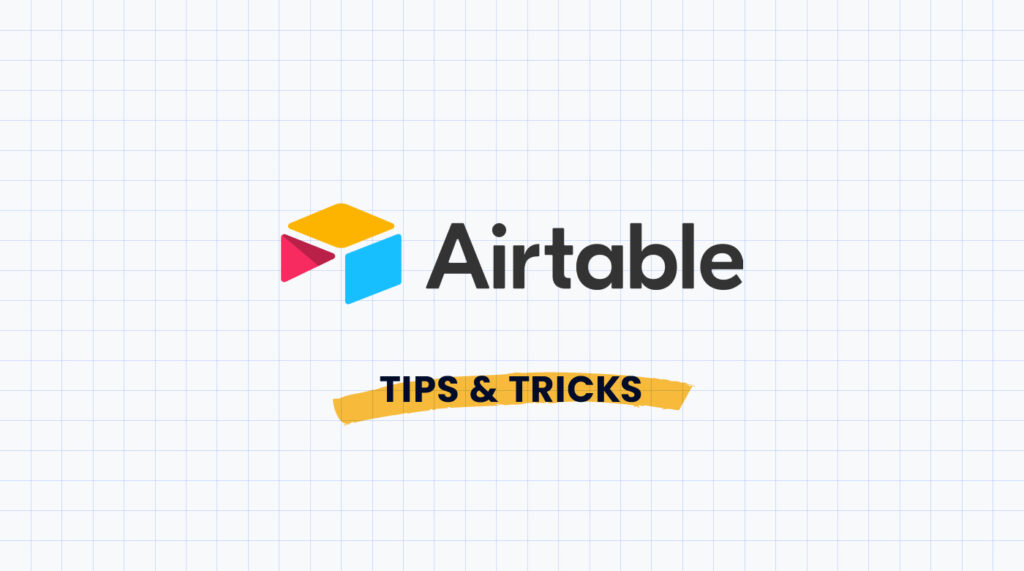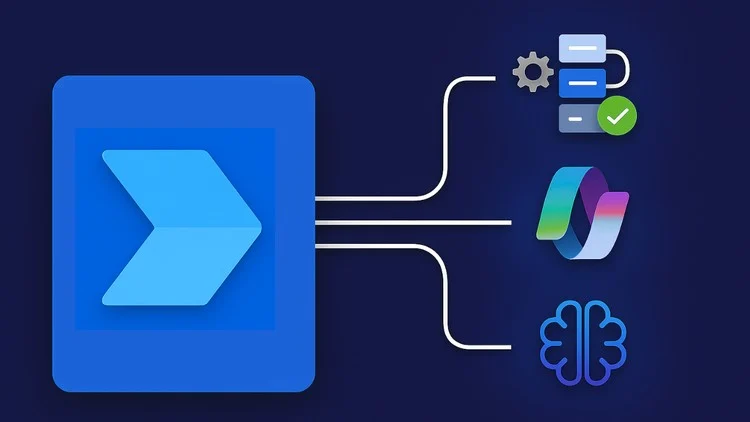
Ideation and Planning: Laying the Foundation for Success
Defining Your AI App’s Purpose and Target Audience
Before diving into code, clearly define your AI application’s core function. What problem will it solve? What user need will it fulfill? For example, instead of broadly aiming for a “smart home app,” consider a more focused goal like “an AI-powered app that optimizes energy consumption based on occupancy and weather patterns.” This specificity is crucial for effective development and targeted marketing. A well-defined purpose helps guide your technical choices and ensures your app remains focused. Consider examples like Grammarly, which focuses on grammar and writing assistance, or Duolingo, which specializes in language learning. These apps excel because of their clear, concise purpose.
Next, identify your target audience. Who are you building this app for? Understanding their demographics, tech-savviness, and needs is vital. Are you targeting experienced professionals, casual users, or a specific niche market? “Understanding your audience informs design decisions, from the app’s interface to its features.” For example, an AI-powered medical diagnosis app would require rigorous testing and a user interface suitable for medical professionals, unlike a simple AI-powered game designed for casual gamers. This detailed user analysis ensures your app resonates with its intended users and maximizes its potential impact.
Identifying the Core Functionality and Features
Defining your AI app’s core functionality is crucial. Start by identifying the central problem your app solves. Will it automate a task, provide insights from data, or offer a personalized experience? For example, an AI-powered recipe app might focus on personalized meal planning based on dietary restrictions and preferences. This core function dictates many subsequent decisions. Consider the scope carefully; starting small and iterating is often best. Avoid feature creep by prioritizing essential functionalities.
Next, outline the key features that directly support this core function. These features should be user-centric and enhance the overall experience. Think about how users will interact with your AI. Will it be a chatbot interface, a visual dashboard, or something else? For our recipe app example, essential features might include ingredient searching, dietary filtering, step-by-step instructions, and perhaps even integration with smart kitchen appliances. “Remember, a well-defined feature set keeps development manageable and increases the chances of creating a successful AI application.” Prioritize features based on user needs and potential impact.
Choosing the Right AI Technologies and Platforms
Selecting the appropriate AI technologies is crucial for your app’s success. Consider the specific problem your app solves. This dictates the necessary AI capabilities. For image recognition, you might use TensorFlow or PyTorch, powerful libraries offering pre-trained models. Natural Language Processing (NLP) tasks often benefit from platforms like Google Cloud Natural Language API or Amazon Comprehend, which provide ready-made services for sentiment analysis and entity recognition. “Choosing the right tools depends heavily on your technical expertise and project scope.” Don’t underestimate the learning curve; factor in the time required to master the chosen platform.
Platform selection also plays a vital role. Cloud platforms like AWS, Google Cloud Platform (GCP), and Azure offer scalable infrastructure and pre-built AI services. This is particularly helpful for managing computational resources, especially during periods of high usage. Alternatively, you could leverage serverless functions for cost-effectiveness. However, “carefully weigh the advantages of managed services against the potential loss of control over your infrastructure.” Remember to consider factors such as pricing, ease of integration with other services, and the availability of support documentation when making this critical decision.
Choosing the Right AI Technologies and Tools

Machine Learning vs. Deep Learning: Selecting the Appropriate Approach
The choice between machine learning (ML) and deep learning (DL) significantly impacts your AI app’s capabilities and complexity. ML excels in tasks with structured data, like predicting customer churn using demographic information. Algorithms like linear regression or support vector machines are effective here. Consider ML if you have a clearly defined problem and a readily available, labeled dataset. Think of spam filters – a classic example of successful ML application. “Choosing ML allows for faster development and often requires less data than deep learning.”
Deep learning, a subset of ML, shines when dealing with unstructured data like images, audio, or text. It uses artificial neural networks with multiple layers to extract complex features. For example, image recognition, natural language processing (NLP), and speech recognition often leverage deep learning’s power. However, DL requires significantly more data and computational resources. “Building a deep learning model demands expertise and often necessitates powerful hardware, potentially increasing development time and costs.” Carefully weigh the complexity of your task against available resources before selecting this powerful, yet resource-intensive approach.
Exploring Popular AI Frameworks and Libraries (TensorFlow, PyTorch, etc.)
The foundation of many AI applications lies in robust frameworks and libraries. TensorFlow and PyTorch are leading contenders, each offering distinct advantages. TensorFlow, developed by Google, excels in its production-ready capabilities and extensive community support, making it ideal for deploying large-scale AI models. Its Keras API simplifies model building, while TensorFlow Lite enables deployment on mobile and embedded devices. Real-world examples abound, from Google Photos’ image recognition to numerous medical diagnosis applications.
Conversely, PyTorch, created by Facebook’s AI Research lab (FAIR), prioritizes flexibility and ease of debugging. Its dynamic computation graph allows for more intuitive model development and experimentation, making it a favorite among researchers. PyTorch’s strong focus on research translates into cutting-edge capabilities and a vibrant community constantly pushing the boundaries of AI. “Choosing between TensorFlow and PyTorch often depends on your project’s specific needs and your team’s familiarity with each platform.” Consider factors like deployment requirements and the complexity of your AI model when making your decision.
Cloud Computing Platforms for AI Development (AWS, Google Cloud, Azure)
Leveraging cloud computing is crucial for AI app development. The major players—Amazon Web Services (AWS), Google Cloud Platform (GCP), and Microsoft Azure—offer comprehensive suites of AI services. These include pre-trained machine learning models, powerful computing resources like GPUs, and robust storage solutions. Choosing the right platform often depends on your specific needs and existing infrastructure. For instance, AWS boasts a massive selection of services and a large community, while GCP excels in data analytics and big data processing. Azure integrates well with other Microsoft products, making it a strong choice for businesses already invested in the Microsoft ecosystem.
Consider factors like cost, scalability, and ease of integration with your existing tech stack. Each platform offers free tiers, allowing you to experiment before committing significant resources. “Selecting the optimal cloud provider is a critical step, impacting both the development process and the overall performance of your AI application.” Remember to factor in the availability of specific AI tools and APIs relevant to your project. For example, if you’re working heavily with natural language processing (NLP), Google Cloud’s extensive NLP capabilities might be a significant advantage. Careful research and planning are essential for a successful AI project.
Designing the User Interface (UI) and User Experience (UX)
Creating an Intuitive and User-Friendly Interface
A user-friendly interface is crucial for the success of any AI application, especially those built by independent developers. Poor design can lead to user frustration and abandonment, negating all your hard work. Therefore, prioritize simplicity. Use clear, concise language in prompts and feedback. Employ familiar design patterns users will recognize from other apps, minimizing the learning curve. Consider the principles of accessibility, ensuring your app is usable by individuals with disabilities. Examples include providing sufficient color contrast and alternative text for images. Remember that intuitive design is not about aesthetics alone; it’s about functionality and ease of use.
“The key is to focus on the user journey,” making each interaction seamless and predictable. Incorporate visual cues and progress indicators to keep users informed. Thorough testing is essential. Gather feedback early and often, iteratively refining your design based on user testing results. Tools such as user testing platforms and A/B testing can provide valuable insights. Remember, a well-designed AI app not only performs its functions effectively but also provides a positive and enjoyable user experience, driving engagement and adoption. “A well-designed UI/UX is your best friend and worst enemy when building AI applications.”
Prioritizing User Needs and Accessibility
Understanding your users is paramount when designing an AI app. Conduct thorough user research, employing methods like surveys and interviews, to identify their needs and pain points. Consider the demographics of your target audience – their technical skills, familiarity with AI, and preferred interaction styles will all influence your UI/UX design choices. For example, an AI-powered medical diagnosis app requires a far more intuitive and simple interface compared to a complex data analysis tool for financial professionals. This research directly informs the functionality and design choices, ensuring usability.
Accessibility is not an afterthought; it’s a fundamental design principle. “Building an inclusive AI app means considering users with disabilities from the outset.” This involves adhering to accessibility guidelines like WCAG (Web Content Accessibility Guidelines), incorporating features like screen reader compatibility, keyboard navigation, and sufficient color contrast. Apps like the Be My Eyes app, which connects blind users with sighted volunteers via video call, exemplify successful accessibility implementation. Ignoring accessibility limits your potential user base and damages your brand reputation. Prioritizing accessibility ensures everyone can benefit from your AI innovation.
Prototyping and Testing the UI/UX Design
Before committing to development, prototyping your AI app’s UI/UX is crucial. Low-fidelity prototypes, such as wireframes sketched on paper or created using tools like Figma, allow for quick iteration and feedback. This initial phase helps identify potential usability issues early, saving significant time and resources later in the development cycle. Testing these early prototypes with your target users is essential for gathering valuable insights. Observe user interactions and note any areas of confusion or frustration.
User testing should involve diverse participants representing your intended audience. Consider A/B testing different design elements to see which perform better. Methods like usability testing, where users complete specific tasks while their actions are observed, are highly effective. Remember, “iterative design is key – incorporate feedback from each testing round to refine your UI/UX.” Tools like Hotjar or Crazy Egg can provide heatmaps and user session recordings, offering data-driven insights for UI/UX optimization. This process ensures a user-friendly and effective AI application.
Developing Your AI App: A Step-by-Step Guide
Data Collection and Preparation: Ensuring High-Quality Data
The foundation of any successful AI application is high-quality data. Garbage in, garbage out, as the saying goes. This means meticulously planning your data collection strategy. Identify reliable sources. Consider using publicly available datasets like those from Kaggle or UCI Machine Learning Repository for common tasks, or exploring APIs for access to real-time data. Remember to carefully document your sources and any preprocessing steps. “Thorough documentation is crucial for reproducibility and future development.”
Data preparation is equally vital. This involves cleaning your data, handling missing values, and transforming it into a format suitable for your chosen AI model. This might involve techniques like normalization, standardization, or feature engineering. For example, you might need to convert categorical variables into numerical representations using one-hot encoding. Addressing outliers is also critical to avoid skewed results. “Invest significant time in data cleaning; it directly impacts your model’s accuracy and reliability.” Remember, the better your data, the better your AI app will perform.
Building the AI Model: Training, Validation, and Testing
Building a robust AI model requires a rigorous process. First, you’ll need a substantial dataset to train your model. This data needs careful cleaning and preparation; inconsistencies will significantly impact accuracy. Consider using established libraries like TensorFlow or PyTorch for building and training your model. Remember to split your data into training, validation, and testing sets (e.g., 80%, 10%, 10% respectively). Regularly monitor model performance on the validation set to prevent overfitting, where the model performs well on the training data but poorly on unseen data.
Testing is crucial to assess real-world performance. Use your test set to evaluate the model’s accuracy, precision, and recall, choosing metrics appropriate to your app’s goals. For example, an image recognition app might prioritize precision to minimize false positives. “Iterative model refinement is key; expect to repeatedly adjust your model architecture, hyperparameters, and data preprocessing based on testing results.” Tools like TensorBoard can provide valuable visualizations to aid in this iterative process, allowing for data-driven improvements. Only deploy a thoroughly tested model to ensure reliable and effective app functionality.
Integrating the AI Model with the UI/UX
Seamlessly connecting your powerful AI model to a user-friendly interface is crucial for a successful AI app. This integration requires careful planning and execution. Consider using established frameworks like React Native or Flutter for cross-platform compatibility, ensuring a consistent experience across iOS and Android. Remember, a poorly designed UI can overshadow even the most sophisticated AI. Prioritize intuitive navigation and clear feedback mechanisms to enhance user engagement. For example, if your app uses natural language processing, ensure users understand how to properly format their input for optimal results.
The key is to build a user interface (UI) that’s not only visually appealing but also effectively communicates the capabilities of your AI. Think about how you’ll display the AI’s output. Will it be text, images, or interactive visualizations? “The user experience (UX) must be carefully considered at every step, from initial input to final output presentation.” Tools like Figma or Adobe XD can help prototype and refine the UI/UX before committing to development. Testing with real users throughout the process is essential to identify and resolve usability issues early on, ultimately leading to a more user-friendly and successful AI application.
Testing, Deployment, and Maintenance
Rigorous Testing Procedures to Ensure Functionality and Accuracy
Thorough testing is critical for any AI application, especially one you’ve built yourself. Begin with unit testing, focusing on individual components to identify and fix bugs early. This isolates problems, making debugging much simpler. Next, move to integration testing, ensuring different parts of your AI app work seamlessly together. For example, if you have a natural language processing (NLP) component and a recommendation engine, rigorous testing will reveal whether they interact correctly. Don’t forget user acceptance testing (UAT), where real users interact with your application, providing invaluable feedback on usability and overall functionality. Remember that even small glitches can significantly impact user experience.
Following these steps helps ensure accuracy and reliability. Consider employing automated testing frameworks like Selenium or pytest to streamline the process and improve efficiency, especially as your AI app grows in complexity. These frameworks allow for repeated testing, identifying regressions introduced by new code. “Regular, comprehensive testing isn’t just a good practice; it’s essential for a successful AI application.” This iterative approach to testing, coupled with continuous monitoring after deployment, is crucial for maintaining the quality and accuracy of your AI application over time. Remember, data quality plays a huge role; poor data leads to inaccurate results, no matter how well your code is written.
Choosing a Deployment Strategy (Cloud, Mobile, Web)
Your choice of deployment platform significantly impacts your AI app’s reach and functionality. Consider a cloud deployment using platforms like AWS, Google Cloud, or Azure for scalability and ease of management. This is ideal for applications needing significant computing power or handling large datasets, such as complex image recognition or natural language processing models. Many successful AI applications, like those used in Google Translate, leverage this strategy. “This approach offers superior flexibility and scalability for handling fluctuating user demand.”
Alternatively, deploying your AI app as a mobile or web application offers a more direct user experience. Mobile deployments require careful optimization for different devices and operating systems, potentially using frameworks like React Native or Flutter. Web applications are generally simpler to deploy and update but might face limitations in processing power compared to cloud solutions. “Choosing between these options depends on your app’s specific requirements, target audience, and resource constraints.” For example, a simple chatbot might suffice as a web app, while an advanced AR application would benefit from mobile deployment.
Ongoing Monitoring, Maintenance, and Updates
Post-deployment isn’t the finish line; it’s the starting point for ongoing refinement of your AI app. Continuous monitoring is crucial. Regularly assess your app’s performance using key metrics like accuracy, latency, and resource consumption. Tools like Google Cloud Monitoring or Amazon CloudWatch can provide valuable insights into user behavior and system health. Identify and address any performance bottlenecks or unexpected errors promptly. This proactive approach minimizes disruptions and ensures a positive user experience.
Addressing bugs and implementing feature updates is an essential part of maintaining a successful AI application. Regular software updates improve not only performance but also security. They often include crucial patching of vulnerabilities, preventing malicious exploits. Remember, user feedback is invaluable. Actively solicit and incorporate user feedback into your update cycle. “Continuously iterating based on user data and performance metrics is key to building a truly successful and user-friendly AI application.” Consider employing A/B testing to evaluate the impact of changes before widespread implementation. This iterative approach ensures your AI app remains robust, relevant, and user-satisfying.
Monetizing Your AI App: Strategies for Success
Exploring Different Revenue Models (Subscription, Freemium, Advertising)
Choosing the right revenue model is crucial for your AI app’s success. Subscription models, like those used by popular productivity apps like Grammarly or Adobe Creative Cloud, offer predictable recurring revenue. This works well for apps providing high-value, ongoing services. However, it requires a compelling value proposition to justify the recurring cost. Consider offering tiered subscriptions to cater to different user needs and budgets.
Alternatively, a freemium model can attract a large user base quickly. This approach, employed effectively by apps like Spotify and Dropbox, offers a basic version for free while charging for premium features. This strategy allows users to experience the app’s value before committing to a paid version. A well-executed freemium model requires a clear delineation between free and paid features. Carefully consider what features to offer for free, ensuring they are valuable, yet incomplete enough to incentivize upgrading. Finally, advertising can generate revenue, but user experience is paramount. “Too many intrusive ads can harm your app’s reputation and drive users away,” so focus on non-intrusive methods such as tasteful banner ads or sponsored content integrations.
Building a Strong Marketing and Sales Strategy
A successful AI app needs more than just great technology; it requires a robust marketing strategy. Start by identifying your target audience. Who needs your app? What problems does it solve for them? Tailor your messaging to resonate with their specific needs and pain points. Consider utilizing targeted digital advertising on platforms like Google Ads and social media, focusing on keywords related to your AI app’s functionality and benefits. Case studies showcasing real-world successes can significantly boost credibility. “Think about creating compelling video demonstrations to visually showcase your AI app’s capabilities and user-friendliness.”
Beyond online marketing, explore strategic partnerships. Collaborate with complementary businesses to reach a wider audience. This could involve joint marketing campaigns or integrating your app with other popular platforms. Public relations are also crucial. Secure media coverage in relevant tech publications and blogs. Attend industry events and conferences to network and build relationships. “Remember, consistent and targeted marketing efforts are key to driving downloads and building a loyal user base for your AI application.” Focus on proving your app’s value proposition immediately – highlighting its unique selling points and showing a clear return on investment for potential users.
Scaling Your AI App and Expanding Its Reach
Scaling your AI application requires a strategic approach. Consider cloud-based solutions like AWS or Google Cloud Platform to handle increasing user demand and data storage needs. These platforms offer scalable infrastructure, allowing you to adjust resources as your app grows, avoiding costly overprovisioning or performance bottlenecks. Remember to monitor key performance indicators (KPIs) such as latency and response times to proactively address scaling challenges. Companies like Netflix and Spotify rely on similar cloud-based architectures to manage billions of user requests daily.
Expanding your app’s reach involves effective marketing and distribution strategies. App store optimization (ASO) is crucial for visibility in app stores. This includes optimizing your app’s title, description, and keywords to improve search rankings. Consider targeted advertising campaigns on platforms like Google Ads or social media to reach your ideal user base. “Building a strong online presence through a well-maintained website and active social media engagement is equally vital for attracting new users and fostering a loyal community.” Partnering with complementary businesses or integrating your AI app into existing platforms can also significantly broaden your reach.





